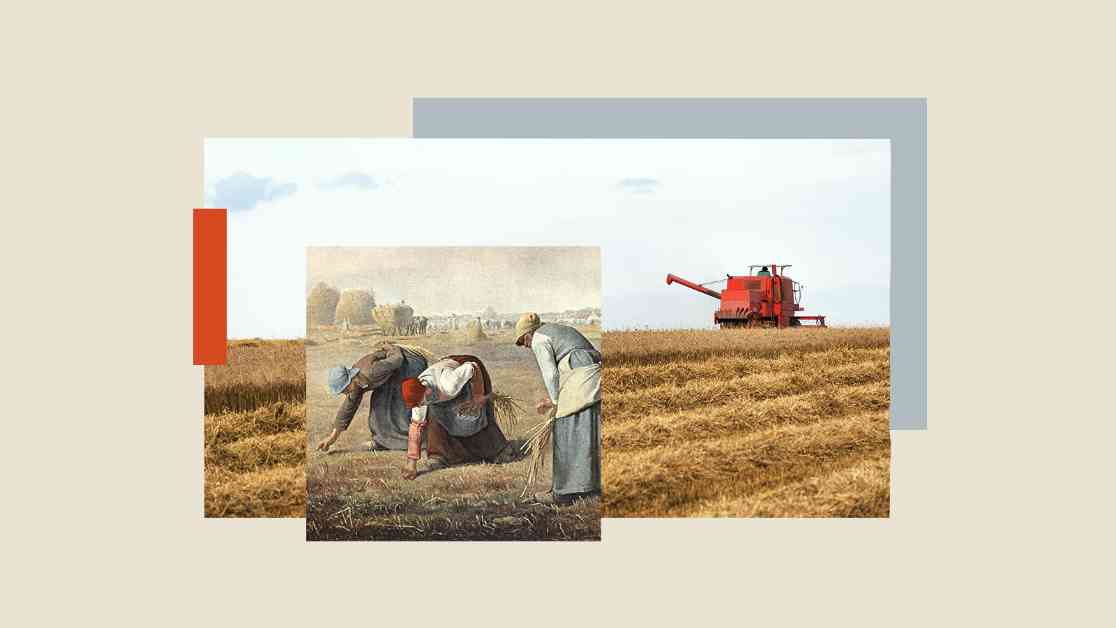Ancient Gleaning Practice Fighting Modern Food Waste
In a world where food waste is a pressing issue, an ancient practice known as gleaning is making a comeback to combat this problem. Dating back to centuries ago, gleaning was a lifeline for the rural poor in England and France, allowing them to collect leftover crops after the harvest. However, with the rise of privatization and industrialization in the late 18th century, gleaning fell out of favor, becoming a relic of the past. Yet, in recent times, the practice has resurfaced as a response to the dual crises of food waste and poverty.
Gleaning in Action: A Modern Solution
Today, gleaning groups across the UK are actively engaged in collecting surplus produce from farms to redistribute it to those in need. Volunteers work tirelessly to rescue crops that would otherwise go to waste, ensuring that the surplus food reaches food banks and community projects. The Sussex Gleaning Network, for example, has collaborated with farmers and volunteers to save over 500 metric tons of fruits and vegetables, highlighting the impact of this grassroots movement.
The Environmental and Social Costs of Food Waste
The consequences of food waste are far-reaching, with environmental and social costs that cannot be ignored. Rotting food releases methane, a potent greenhouse gas, while the resources used to grow that food are wasted. In the UK alone, unharvested crops contribute significantly to agricultural emissions, exacerbating the environmental crisis. Tristram Stuart, a historian and activist, envisioned gleaning as a way to challenge food waste at its source, leading to the formation of the Gleaning Network in 2011.
Gleaning as a Symbolic Solution
While gleaning serves as a practical solution to rescue surplus produce, its impact goes beyond salvaging food. Gleaners work with farmers to turn rejected crops into valuable community resources, bridging the gap between waste and renewal. Organizations like Feedback Global advocate for a more sustainable food system, emphasizing the need to reduce overproduction and create secondary markets for surplus produce. Despite the challenges, gleaners persist in their efforts, seeing every rescued potato or courgette as a small victory.
Challenges and Future Prospects
Legal and cultural differences shape gleaning practices worldwide, with varying degrees of acceptance and support from farmers. In the US, grassroots groups and church volunteers often lead gleaning efforts, relying on personal relationships with farmers for coordination. While gleaning offers a reactive solution to food waste, experts like Laurie Beyranevand emphasize the need for proactive approaches to address systemic issues. The ultimate goal is to create a food system where gleaning becomes unnecessary, highlighting the importance of sustainability and nutrition in combating waste.
The Beauty of Gleaning: A Reminder of Value
Beyond its practical implications, gleaning serves as a powerful reminder of the value in what is often overlooked. By turning discarded crops into nourishment, gleaners bridge the gap between nutrition and sustainability, highlighting the interconnectedness of food and the environment. In a world where abundance coexists with waste, gleaning offers a timeless lesson in appreciating the beauty of what remains, echoing the sentiments captured in Jean-François Millet’s iconic painting, “The Gleaners.”














